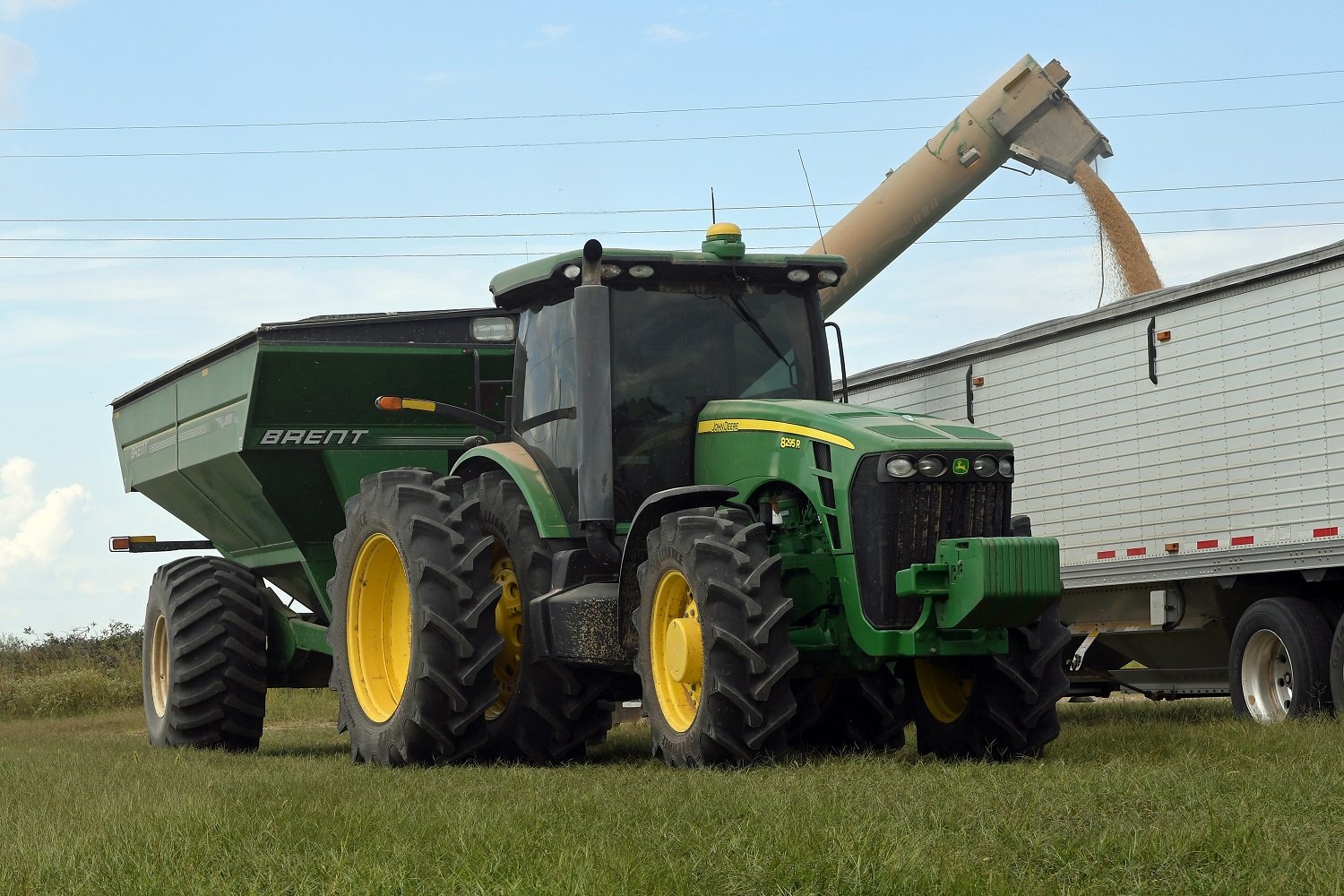One U.S. Farmer Feeds More than 160 People
The number of people fed by a single U.S. farmer has grown steadily over the years. In the 1800s, a U.S. farmer grew enough food to feed between three and five people. According to the website Statista, the number has continued to grow over the decades:
- 1940 ~20
- 1960 ~45
- 1980 ~100
- 2005 ~144
- 2022 ~165
While the statistic isn’t perfect, it does show a massive improvement in the efficiency and productivity of U.S. farmers. It might surprise you to learn that tires play an important role in helping farmers grow the number of people they feed.

How the Number of People Fed by a Farmer Is Calculated
In 2014, Bob Young, chief economist at the American Farm Bureau Federation (which has been doing this calculation since the 1970s), explained how the number of people fed by a farmer is calculated. The number is based on a ratio—it’s calculated by taking cash receipts from farm ag products, subtracting the trade balance, and dividing the number back into to total cash receipts from ag products. To arrive at the number of farmers, economists take the U.S. population and divide it by the number of farms in the U.S.
The Problem with How the Number of People Fed by a Farmer Is Calculated
The statistic showing how many people are fed by U.S. farmers is useful for highlighting the improved productivity of the nation’s farms, however, the calculation is not without its flaws. First and foremost, the statistic assumes that everything grown by farmers is consumed, which is simply untrue.
For example, a large percentage of corn—the largest U.S. crop in terms of total production—isn’t used to feed people, at least directly. According to the USDA, about a third of the corn crop is used to feed livestock, while another third of the corn crop is used to make ethanol. Similarly, 70% of soybeans—the nation’s second-largest crop—are used for animal feed, while just 15% are used directly for human consumption. This a great reminder of the versatility of U.S. crops!
Another issue with the calculation is that it uses the number of farms, rather than the number of farmers. The USDA reports that there are more than two million farms in the U.S., however, the USDA agricultural census counts roughly 3.4 million “producers,” a category that can include everyone from farm owners to farm owners’ family members to farm managers to tenant farmers.
Ultimately, the nuanced nature of farms and the use of agricultural products is not easily captured by the use of a simple calculation.
Why the Number of People Fed by a Farmer Is Still Impressive
Although the fact that a single U.S. farmer feeds roughly 165 people is imperfect, it’s still impressive. Today, farmers produce significantly more food than their predecessors and achieve this exceptional output using less land—between 1992 and 2012, U.S. farmland decreased by 31 million acres, an area roughly equivalent to the state of New York.
The number of farmers has also shrunk considerably over time. According to the New York Times, farm people made up 64% of the nation’s workforce in 1850. By 1920 the U.S. farm population had receded to just 30%. Today, direct on-farm employment accounts for about 1.5% percent of U.S. employment—a little over 10% of total U.S. employment is related to the agricultural and food sectors. This means that just 1.5% of the population feeds the rest of us, as well as millions of other people around the world.
Innovation is Driving Agricultural Production
Numerous innovations have helped farmers improve their efficiency and production over the years, including increased and improved mechanization, better fertilizers and pesticides, high-tech and hybrid seeds, improved post-harvest handling and storage, and digital advancements such as automation, artificial intelligence, and data collection and analysis.
Tires and Increased Farm Production
Another aspect driving the growth in production from U.S. farmers is a better understanding of how they themselves affect the land. The adoption of new growing techniques and the creation of strategic practices have bolstered farm productivity by minimizing soil compaction, reducing erosion, and conserving water. It’s here that tires have played an important role.
Radial tires are becoming a common sight on today’s farms. Radial tires provide a larger footprint than older, bias-ply technology. Radials lessen the impact of machinery on the field, help reduce soil compaction, and improve yields. They also deliver improved puncture protection in the tread area, better traction, and more efficient fuel use—maximizing uptime, increasing efficiency, and lowering expenses.
High-tech VF radial tires are pushing the benefits of traditional radials to new levels and are poised to help farmers feed even more people. VF tires can carry up to 40% more load at the same inflation pressure as a conventional radial or the same load at up to 40% less inflation pressure. This allows farmers to significantly increase efficiency and minimize the impact of today’s increasingly large and powerful machinery on the ground (the number of people fed by farmers isn’t the only thing that has grown over the years—so has ag equipment).
Yokohama Off-Highway Tires America
Yokohama Off-Highway Tires America’s Alliance brand continues to deliver cutting-edge tires designed to keep pushing production forward. Innovative radial tires like the Alliance Agri Star II—which features a larger-than-typical contact patch and a unique tread pattern—are helping to improve performance, minimize the impact on valuable soil, and boost production. The Alliance Whole Farm Concept is a commitment to delivering a low-pressure VF solution to every piece of ag equipment that enters the field and is an important step in protecting soil health and yields.
Contact your local YOHTA dealer or rep to learn more about Alliance’s numerous ag tire solutions and how we’re helping farmers grow their production and profits.


